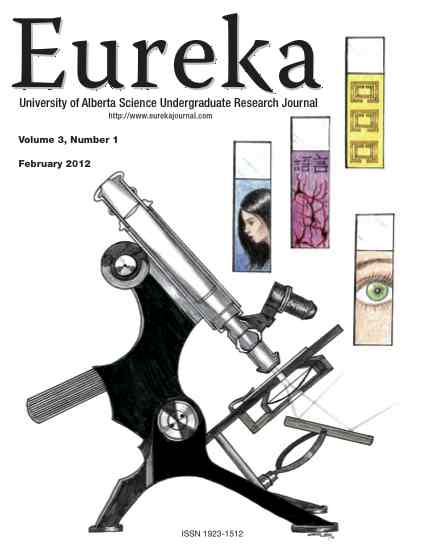Infrared non-invasive sub-wavelength microscopy with metamaterials
DOI:
https://doi.org/10.29173/eureka10334Abstract
I demonstrate that hyperbolic metamaterials may provide the solution to the long-standing prob- lem of the fundamental diffraction limit plaguing conventional microscopy and optical imaging sys- tems. Presented here is the formalism of the theory, classical electrodynamics, used to describe the diffraction limit and sub-wavelength imaging using hyperbolic metamaterials. Effective medium theory is then derived and put forth as a design method for such hyperbolic metamaterials. I then outline the design of a planar device based on a hyperbolic metamaterial for use in infrared mi- croscopy, and present numerical simulations to demonstrate the behaviour and performance of the device. The device employs multilayers of InGaAs/AlInAs and is capable of sub-diffraction imaging resolution in the wavelength range of 8.8 - 10.5 μm. I show that high spatial frequency waves, which normally decay in vacuum, are allowed to propagate and reach the far-field in a hyperbolic meta- material. Using a Green’s function formalism to describe optical sources, sub-wavelength imaging capabilities of hyperbolic metamaterials is shown. Finally, potential device applications using the designed metamaterial are motivated.
Downloads
Downloads
Published
How to Cite
Issue
Section
License
By signing the Eureka publication agreement, authors agree to the following:
- The work has not been previously published in any format;
- Eureka is granted the royalty-free right to publish and disseminate the work in current and future formats;
- The work will be published in Eureka under a Creative Commons license. Eureka encourages authors to publish the work under a Creative Commons Attribution 4.0 International license (CC BY 4.0) that allows others to distribute, tweak, and build upon the work, even commercially, as long as they credit the Author(s) for the original creation.
Authors may however choose to have their work distributed under any of the Creative Commons licenses currently available by specifying their preferred license in the publication agreement. A description of the Creative Commons licenses is available here: https://creativecommons.org/licenses/
- Authors retain their copyright, including the right to subsequently publish or disseminate their work elsewhere, provided that they make reasonable efforts to ensure that the publication in Eureka is acknowledged.
- Authors agree to determine, prior to publication, whether it is necessary to obtain permissions from any third party who hold rights with respect to any photographs, illustrations, drawings, text, or any other material (“third party work”) to be published in connection with your work. Copyright permission will not be necessary if the use is determined to be fair dealing, if the work is in the public domain, or if the rights-holder has granted a Creative Commons or similar license.
- All co-authors and investigators (e.g. faculty supervisors) with claims to the intellectual property have read and signed the agreement, thereby providing their consent for the submission to be published in Eureka.
Unless otherwise specified, authors guarantee that all parts of the submission are the author’s original work. Submissions containing evidence of plagiarism will not be eligible for publication.



